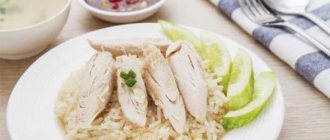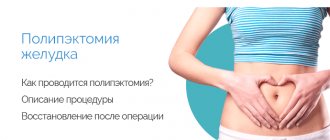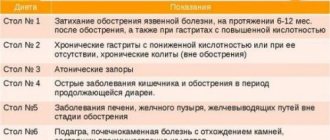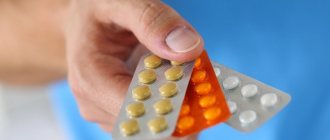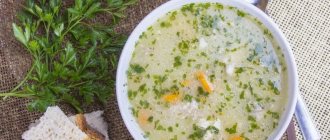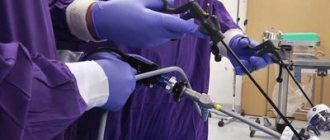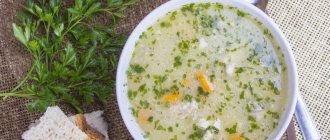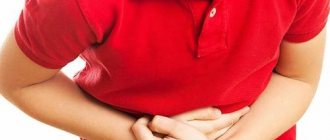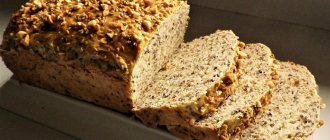Polyp - This is a type of benign tumor, which is a compaction on a stalk. They are located alone, in nests, and can cover the entire gastric mucosa. Pedicled polyps are sometimes located at the top of the folds of the mucous membrane, being a continuation of them. The shape of polyps is often spherical or oval, less often - papillary or mushroom-shaped. Sometimes numerous soft individual villi are combined into a cluster-shaped mass. The cauliflower type has villous papillomas, which more often turn into cancer. The surface of the polyps is velvety, smooth, bumpy or granular. The color of the polyp depends on its structure, the amount of connective tissue, blood vessels, and the degree of malnutrition. Polyps are gray, red, purple-red, orange, pinkish-cherry. The color of the polyp may differ from the color of the surrounding gastric mucosa.
General rules
Gastric polyp refers to benign neoplasms on the mucous membrane, protruding into the lumen of the stomach and connected to its wall by a narrow stalk or a wide base. The shape, location in the stomach, size and quantity vary widely. As a rule, the leading factor in the occurrence and development of gastric polyps is chronic progressive gastritis .
Conservative therapy, regardless of whether these are single or multiple polyps, is practically ineffective, and given the high risk of malignancy of the polyp, the optimal measure for its treatment is polypectomy . However, in some cases, with small polyps of the hyperplastic type, in order to identify the dynamics of the growth of neoplasms, the nature of changes in their surface (the appearance of bleeding, erosions, the formation of irregularities), the formation of new growths, a wait-and-see approach is practiced, which consists in prescribing dietary nutrition with regular examination of the stomach.
The diet for polyps in the stomach is determined by the level of acidity. In case of increased or normal secretion, Diet No. 1 , and in case of secretory insufficiency - Diet No. 2 according to Pevzner.
The main goal of therapeutic nutrition is to maximize the sparing of the gastric mucosa from adverse factors, accelerate the evacuation of food from the stomach, and reduce/increase the secretion of gastric juice. The diet is physiologically complete, energy value is at the level of 2900-3000 kcal per day with a diet containing 95-100 g of proteins, 100 g of fats and 400 g of carbohydrates.
The principles of dietary nutrition are:
- Avoiding hot/cold foods that suppress acid-forming function and have an adverse effect on the mucous membrane.
- Limiting foods and dishes made from them that have a stimulating effect on the enzymatic secretion of the gastrointestinal tract (broths, seasonings, raw vegetables, spicy dishes).
- Exclusion from the diet of foods that are difficult to digest and linger in the stomach for a long time.
- For the purpose of mechanical sparing, dishes are boiled. When prescribing a pureed version of the diet, the food is ground, and when not pureed, it is served not pureed; baking without a crust is allowed.
- Salt is moderately limited (up to 6 g/day).
- Small meals, 5-6 times a day, including drinking milk before bed.
- Drinking regimen: 1500-2000 ml of free liquid.
The menu includes milk and vegetable soups. Vegetables and fruits are served only boiled. Fish and meat - low-fat varieties, in pieces. Legumes and pasta are not allowed in the diet. Barley, wheat and corn cereals are not included in the diet. Porridges are prepared crumbly. Fats (vegetable oils and butter) are added to prepared foods. The diet must include milk, cottage cheese, white dried bread/crackers, soft-boiled eggs, jelly, non-sour jam, tea, cocoa. Sweets: honey, sugar, marshmallows.
In case of secretory insufficiency with similar principles of dietary nutrition, the diet of Table No. 2 includes foods and foods that stimulate the production of gastric juice. These include various soups prepared in concentrated meat and fish broths, pasta, vegetables, and the use of seasonings is allowed. Foods that are difficult and take a long time to digest in the stomach are excluded from the diet. Almost all types of culinary processing are allowed (boiled, pureed, stewed, baked, fried without crust), and degrees of grinding. Table salt - up to 15 g/day.
Drinking regimen: 1.5 liters of free liquid. The menu allows first courses (soup, borscht, pickle), which are prepared in meat/fish, vegetable or mushroom broth with the inclusion of various cereals, potatoes, and vegetables. The range of second courses is expanding - baked, boiled, fried lump meat/fish, pancakes with meat, cutlets.
Boiled and baked vegetables (pieces and pureed) - white cabbage, potatoes, zucchini, carrots, beets, cauliflower, green peas, pumpkin. The diet includes cottage cheese, fermented milk products, cream, fruit/vegetable juices, bran decoctions, ripe berries and mashed fruits.
Diet after removal of a polyp in the stomach
Dietary nutrition after surgery to remove polyps ( gastric polypectomy ) is much more important. Typically, minimally invasive endoscopic polypectomy is used to remove single polyps. Gastric resection is performed in rare cases in the presence of multiple large neoplasms (with gastric polyposis), often recurrent polyps or complicated by gastric obstruction, massive bleeding, pinching, necrosis, or malignancy of the polyp. There is no specific drug treatment for stomach polyps. However, since this disease often occurs against the background of gastritis , treatment and diet are prescribed in accordance with the principles of treatment of gastritis ( peptic ulcer ).
Immediately after the operation, the patient is prescribed a full starvation diet for a day. On day 2, one teaspoon is given, after 15 minutes, 1 glass of sweet warm tea and rosehip infusion (50 ml); on the 3rd day, in the absence of abdominal bloating, normal peristalsis and the passage of gases, in order to maximize the sparing of the gastrointestinal mucosa from any impact and reduce inflammation, Diet No. 1A . Diet with reduced energy value. The consumption of mainly carbohydrates and, to a lesser extent, proteins and fats is reduced.
Meals during semi-bed rest. Prescribe pureed, semi-liquid and liquid food containing easily digestible foods and a sufficient amount of liquid. To prevent flatulence , foods containing complex carbohydrates, whole milk and fiber, as well as dishes and foods that stimulate secretion and irritate the gastric mucosa, are excluded from the diet. Hot/cold dishes are excluded. The amount of sodium chloride is limited.
Small meals (small portions 6 times a day) during bed rest. Patients often experience significant fluid loss after surgery. The daily requirement for free fluid during an uncomplicated postoperative period is approximately 2-2.5 liters. For complications ( intoxication , fever ) - 3-3.5 l.
On days 6-8, in order to stimulate mucosal regeneration processes, the patient is transferred to Diet 1B . The diet contains limited carbohydrates with an appropriate protein and fat content. Cold/hot dishes that irritate the mucous membrane and stimulate/inhibit the secretory function of the stomach are excluded. Food is steamed or boiled, served in puree form, soups with a mucous decoction. Drinking regimen: at least 1.5 liters of liquid. The amount of salt is limited. Milk is given at night.
One of the objectives of therapeutic nutrition is to eliminate, within 10-15 days after polypectomy , the deficiency of proteins, vitamins and minerals, which often develops in connection with blood loss, fever, malnutrition in the first postoperative days, and the breakdown of tissue proteins. Therefore, it is necessary, if possible, to transfer the patient to a nutritious diet as early as possible, taking into account his condition, the state of the gastrointestinal tract and the ability to digest food. Usually on the 12th day the patient is transferred to Diet No. 1 . To reduce the phenomenon of metabolic acidosis, dairy products, boiled vegetables and grated fruits are included in the diet.
What is this operation
A polyp is a benign tumor-like formation on a stalk or broad base, hanging from the walls of a hollow organ into its lumen. In some cases, tissue degeneration into malignant neoplasms is possible. Removal of polyps is done as part of the prevention of rectal cancer.
There are cases when polyps cause discomfort: abdominal pain and rectal bleeding. Removing them also helps relieve painful symptoms.
Indications
- Diet No. 1 for polyps in the stomach with increased/normal secretion;
- Diet No. 2 for polyps in the stomach with secretory insufficiency.
After polypectomy :
- starvation diet (1-3 days);
- Diet 1A for 3-5 days;
- Diet 1B for 6-8 days;
- Diet No. 1 on day 12 for a period of 1-2 months with normo / hyperchlorhydria ;
- Diet No. 2 for hypo / achlorhydria .
Diet and proper nutrition for polyps in the stomach: useful recommendations
Content
2 Diet for gastric polyps, useful tips
Few doctors can give a clear answer to the question of what drugs should be used to treat gastric polyps. There is simply no clear treatment regimen to combat polyposis. Sometimes gastroenterologists recommend the use of symptomatic medications to reduce the unpleasant symptoms of pathology. However, in most cases, patients are simply given a diet of stomach polyps.
The gastric polyps diet involves a ban on the following categories of food:
- smoked products;
- alcoholic drinks;
- sugar;
- fatty, spicy and sour foods;
- white bread and pastries;
- all types of marinades;
- strong tea and coffee;
- radishes and citrus fruits should be sharply limited.
During an exacerbation, you should eat carefully. It is better to avoid sugary and fermented dairy products. It is also advisable to completely destroy canned foods for gastric polyps. It is worth reducing the amount of protein foods you consume. At the very least, if you have stomach problems, you should take carbohydrates and proteins separately.
If the label of a product purchased in a store contains dyes, substitutes or flavors, refuse the purchase immediately. Dishes should only be warm - never hot or cold. This is too important to ignore! If you follow them, you will forget about ice cream and drinks stored in the refrigerator.
The stomach polyps diet involves eating small, frequent meals. After light cooking, it is advisable to include cooked or steamed protein foods, fermented dairy products, low-fat broths, fruits and vegetables in the diet. The healing properties of carrots, spinach, garlic and onions - they help suppress gastric polyps and stabilize health.
What kind of nutrition should a gastric polyp receive? There are products that improve the patient's condition. These include pumpkin and cabbage, from which it is recommended to prepare porridge. The gastrointestinal tract of sprouted wheat also helps.
Completely normalizes all metabolic processes. Sea kale is extremely valuable. If you don't like coleslaw like this, use it dry instead of salt. It is enough to eat the powder on a spoon with food.
Many patients claim that they took advantage of the polyp's gastric carrot juice, pre-treated with gauze to remove starch. It is recommended to mix with onion, garlic or spinach juice. First take 1 hour a day, and then gradually increase the dose to half a glass.
Gastroenterologist Mikhail Vasilievich:
'It is known that there are special drugs for the treatment of the gastrointestinal tract (ulcers, gastritis, etc.) prescribed by doctors. But we will not talk about them, but about those medicines that they can use themselves and at home...” Read more >>>
Useful elements
It should be noted that a protein diet for gastric polyps only helps those who do not have an allergic reaction. For this reason, when preparing a daily diet, it is necessary to obtain the consent of a doctor, otherwise, in addition to polyps, other problems will arise.
In the fight against polyps, the body must be saturated with protein and other useful substances to strengthen the immune system. Therefore, the diet requires the use of whey and dairy products. There is only one limitation for this type of diet - diseases of the bile ducts. With such pathologies, the body is not able to break down milk fat and casein associated with milk. To facilitate the functioning of the kidneys and liver when taking medications, you should eat lighter foods, which it is advisable to grind. It also makes the stomach easier.
It is advisable to cook soups only with vegetables. Strong broths are prohibited, as are foods that provoke meteor showers. Meat lovers should switch to dietary products:
- chicken breast;
- lean beef;
- veal;
- rabbit;
- quail;
- turkey breast.
7
Without carbohydrates, the body does not receive the energy it needs. Therefore, it is necessary to increase the consumption of foods containing beneficial elements. Then the body will be able to fight stomach polyps. Vegetables are high in carbohydrates with fruits, pasta and cereals. The stomach polyp diet means that food is crushed before consumption.
Acidic fruits should be avoided because the acid in them damages the surface of the stomach lining and encourages the growth of polyps. Most people love sweets, so cakes and pastries are replaced with dietary gingerbread and cookies, dried apricots and jam, marshmallows, marshmallows and soft toffee.
Fermented dairy products help prevent gastrointestinal diseases. It is better to eat kefir or organic belt. Flour products can eat products made from wholemeal flour or breadcrumbs.
Buy pasta that is made from durum wheat, because they are rich in fiber, bind cholesterol, and normalize the balance of intestinal flora.
When following a diet, be sure to include foods with vitamin E and D in your diet. There are many of them in the following foods:
- impulses;
- vegetable oil;
- Brussels sprouts;
- green vegetables;
- pears;
- rowan, rosehip and sea buckthorn;
- cottage cheese;
- fish liver;
- egg yolk.
All dietary foods must be baked or steamed.
Diet for polyps in the stomach, useful tips
Recommended by nutritionists:
- remain on the diet even if the polyps stop growing or disappear completely;
- exclude too salty foods from the diet, not to mention spicy, alcoholic, smoked foods and marinades, strong tea or coffee;
- use only cooked dishes on the menu without frying it;
- eat small meals often;
- do not rush to eat, food should be chewed thoroughly
It is necessary to check the condition of the teeth, timely treatment and prosthetics. Experts note that almost all people with stomach polyps have dental problems.
With them in the mouth there are a lot of microbes that enter the stomach with food. Without appetite you cannot eat by force. This condition means that there is not enough hydrochloric acid in the stomach to digest food.
However, liquid is necessary to drink.
Eat Viburnum berries daily. Although many people don't like them because of their bitter taste. However, if you eat half a glass of these berries every day, you can get rid of gastric polyps without surgery.
In the morning and before going to bed, you need to squeeze the juice out of potatoes and drink half a glass. If desired, you can add boiled water, sugar or honey to the drink. Viburnum retains its healing properties in the freezer. Sea buckthorn juice and pressed sea buckthorn oil have the same effect.
You can prepare it yourself or buy it at the pharmacy. Homemade oil is much more effective - it is drunk three times a day on a teaspoon the third hour before meals. Cabbage juice is also beneficial.
Heals the surface of the stomach lining and helps get rid of polyps, no surgery required.
»
Be the first to comment
Leave a comment Cancel reply
Version of the site for the visually impaired
Authorized Products
The diet involves preparing the first soups in vegetable/potato broth with pureed vegetables or boiled buckwheat, semolina, and white rice. You can include milk soups with noodles and puree soups with pureed chicken in your diet. Soup dressings are not fried, but rather seasoned with oil when serving. The diet includes dried white wheat bread, white crackers, biscuits, chicken, lean beef, rabbit meat, turkey, and unsalted lean ham.
From fish - low-fat varieties (carp, pike, hake, pike perch). Allowed are steamed omelet eggs and soft-boiled eggs, unsalted butter and various vegetable oils that are used to add to prepared dishes. The diet includes vermicelli, buckwheat, semolina, and white rice. Porridges are cooked in milk or water until completely boiled or pureed. Vegetables (potatoes, cauliflower, beets, zucchini, pumpkin, carrots) are boiled or steamed.
Dairy products in the diet should include milk and cream, non-acidic yogurt and kefir, fresh cottage cheese, sour cream and curd cheese. Lazy dumplings and cheesecake puddings are made from cottage cheese. Allowed 1-2 times a week in grated mild cheese and 2 soft-boiled chicken eggs or in the form of a steam omelet twice a week. For an unprocessed version of the appetizer table, you can include a salad of boiled vegetables, liver pate, boiled meat/fish, doctor's sausage, lean ham, jellied fish, and sturgeon caviar.
Sweet desserts - milk jelly, meringues, marshmallows, sour jam, marshmallows. Desserts are prepared from pureed steamed berries with the addition of semolina. Baked fruits and sweet berries are allowed. You can also prepare jelly, puree, jelly, compotes. Drinks in the diet include rose hip decoction, fruit juices, tea with milk, and weak coffee with milk.
Table of permitted products
| Proteins, g | Fats, g | Carbohydrates, g | Calories, kcal | |
Vegetables and greens | ||||
| cauliflower | 2,5 | 0,3 | 5,4 | 30 |
| boiled cauliflower | 1,8 | 0,3 | 4,0 | 29 |
| potato | 2,0 | 0,4 | 18,1 | 80 |
| boiled potatoes | 2,0 | 0,4 | 16,7 | 82 |
| boiled carrots | 0,8 | 0,3 | 5,0 | 25 |
| boiled beets | 1,8 | 0,0 | 10,8 | 49 |
Fruits | ||||
| apricots | 0,9 | 0,1 | 10,8 | 41 |
| watermelon | 0,6 | 0,1 | 5,8 | 25 |
| bananas | 1,5 | 0,2 | 21,8 | 95 |
| melon | 0,6 | 0,3 | 7,4 | 33 |
| peaches | 0,9 | 0,1 | 11,3 | 46 |
Berries | ||||
| strawberry | 0,8 | 0,4 | 7,5 | 41 |
| raspberries | 0,8 | 0,5 | 8,3 | 46 |
Cereals and porridges | ||||
| buckwheat porridge with milk | 4,2 | 2,3 | 21,6 | 118 |
| semolina porridge with milk | 3,0 | 3,2 | 15,3 | 98 |
| oatmeal with water | 3,0 | 1,7 | 15,0 | 88 |
| cereals | 11,9 | 7,2 | 69,3 | 366 |
| white boiled rice | 2,2 | 0,5 | 24,9 | 116 |
Flour and pasta | ||||
| noodles | 12,0 | 3,7 | 60,1 | 322 |
Bakery products | ||||
| white bread crackers | 11,2 | 1,4 | 72,2 | 331 |
Confectionery | ||||
| jam | 0,3 | 0,2 | 63,0 | 263 |
| marshmallows | 0,8 | 0,0 | 78,5 | 304 |
| meringues | 2,6 | 20,8 | 60,5 | 440 |
| paste | 0,5 | 0,0 | 80,8 | 310 |
Raw materials and seasonings | ||||
| honey | 0,8 | 0,0 | 81,5 | 329 |
| milk sauce | 2,0 | 7,1 | 5,2 | 84 |
Dairy | ||||
| milk 3.2% | 2,9 | 3,2 | 4,7 | 59 |
| condensed milk | 7,2 | 8,5 | 56,0 | 320 |
| cream 15% (low fat) | 2,3 | 15,0 | 3,6 | 161 |
Cheeses and cottage cheese | ||||
| cottage cheese | 17,2 | 5,0 | 1,8 | 121 |
Meat products | ||||
| boiled beef | 25,8 | 16,8 | 0,0 | 254 |
| beef stew | 16,8 | 18,3 | 0,0 | 232 |
| beef liver | 17,4 | 3,1 | 0,0 | 98 |
| boiled beef tongue | 23,9 | 15,0 | 0,0 | 231 |
| boiled veal | 30,7 | 0,9 | 0,0 | 131 |
Bird | ||||
| boiled chicken breast | 29,8 | 1,8 | 0,5 | 137 |
| boiled chicken drumstick | 27,0 | 5,6 | 0,0 | 158 |
Eggs | ||||
| omelette | 9,6 | 15,4 | 1,9 | 184 |
| soft-boiled chicken eggs | 12,8 | 11,6 | 0,8 | 159 |
Fish and seafood | ||||
| boiled fish | 17,3 | 5,0 | 0,0 | 116 |
Oils and fats | ||||
| vegetable oil | 0,0 | 99,0 | 0,0 | 899 |
| peasant unsalted butter | 1,0 | 72,5 | 1,4 | 662 |
Non-alcoholic drinks | ||||
| mineral water | 0,0 | 0,0 | 0,0 | — |
| coffee with milk and sugar | 0,7 | 1,0 | 11,2 | 58 |
| black tea with milk and sugar | 0,7 | 0,8 | 8,2 | 43 |
Juices and compotes | ||||
| compote | 0,5 | 0,0 | 19,5 | 81 |
| juice | 0,3 | 0,1 | 9,2 | 40 |
| apricot juice | 0,9 | 0,1 | 9,0 | 38 |
| jelly | 0,2 | 0,0 | 16,7 | 68 |
| pumpkin juice | 0,0 | 0,0 | 9,0 | 38 |
| * data is per 100 g of product | ||||
Nutrition for stomach polyps - what can and cannot be eaten?
One of the reasons for the development of digestive tract diseases in adults is poor nutrition. Therefore, the gastroenterologist pays special attention to food products and their preparation before prescribing drug therapy for neoplasms to the gastroenterologist. The diet depends on the type of pathology, secretory and motor functions. Diet with stomach polyps shows certain differences.
The patient must know which foods are allowed in the daily diet and which are contraindicated.
Table of contents
Polyp in the stomach
Pathology is more common in adults. The disease can develop without clinical symptoms or under the guise of inflammation. It is characterized by the appearance of additional formations on the mucous membrane.
You may be interested in: Hyperplastic polyp of the colon: what is it, treatment
The morphological types of gastric polyps depend on the cells from which they are formed. The histological structure and extent of the process indicate a certain course of the disease and a certain prognosis.
For simplicity, experts are guided by the following classification.
Table 1 Classification
| Category | Settings |
| To size |
|
| By type | Speakers:
on a surface:
|
| By number | Single
|
Antrum Polyposis.
| |
| Morphological type | Adenomatosis - formed from glandular epithelium;
|
Treatment
The type of assistance for the disease is determined by the gastroenterologist after receiving data from an objective and additional examination. Conservative procedure or surgical intervention - the choice depends on which polyp is present in the stomach. Treatment is prescribed only in connection with diet. This is because diet is important at every stage of recovery.
Drug therapy includes antispasmodics, antacids, antisecretors, and drugs that improve the regeneration of the mucous membrane. If a Helicobacter infection is detected, antibacterial agents, bismuth subcitrate and proton pump blockers are added.
What is a gastric polyp, how to treat it and if it is dangerous
If polyps are removed, a special menu is recommended. Eating raw foods and foods that irritate the digestive tract is contraindicated. Nutritional expansion is carried out one after another. Start with liquid food, adding new ingredients gradually so as not to mechanically damage the tissue.
Principles of diet for gastric polyps
If the pathology is confirmed, the patient must change the procedure for preparing and eating food. In order for dietary products in the gastric polyp to contribute to the rapid recovery of the body, the following principles are observed:
- Choose foods that provide vitamins, nutrients and minerals that meet your daily needs.
- The amount of food per day is divided into 3 main and 2-3 additional.
- The volume of each serving should be small; there should be no more than 3 hours between snacks and the main part.
- 2 hours before bed and 2 hours at night.
- It is better to cook before eating; storage for more than 24 hours is prohibited.
- Eat foods that are too hot or too cold to avoid irritating your digestive tract. You can eat in the warmth.
- Vegetable oil is added to cooked food to coat the stomach.
- You should give preference to single-ingredient dishes.
- Cooking methods include cooking, steaming, steaming, and sometimes oven baking.
Attention!
Assess the effectiveness of the diet in eliminating clinical symptoms and improving the patient's condition.
What can you eat if you have polyps in your stomach?
Despite the restrictions, you can cook delicious dishes. It is important to follow the rules for combining permitted products. This is necessary for complete absorption of the components. We recommend the following list of foods that you can eat with stomach polyps
- low-fat hard and fermented milk cheese;
- butter - sunflower, corn, olives;
- confectionery products of soft consistency - marshmallows, marshmallows without chocolate, marshmallows, nougat;
- confectionery products without yeast, wheat bread, cookies, gingerbread without filling;
- boiled eggs;
- porridge;
- vegetable broth;
- durum wheat-based pasta;
- potatoes, beets, carrots, cauliflower, broccoli, pumpkin - steamed stew.
- lean meat - veal, rabbit, chicken;
- low-fat dairy products - sour cream, yogurt, whole milk.
What products are contraindicated
Many edible ingredients are prohibited, and some should be limited. Strict prohibitions apply to alcoholic beverages, marinades, smoked, fried and spiced foods.
Contraindicated products for gastric polyps:
- fatty meat and fish - pork, lamb, salmon, mackerel;
- corn, radishes, white cabbage, beans, peas, tomatoes;
- high-fat dairy products;
- chocolate, coffee;
- spices, seasonings;
- citrus fruits, sour fruits and raw berries;
- bread and cake with yeast;
- butter.
What can you drink
In patients with gastrointestinal pathology, it is necessary to maintain a drinking regime. The daily amount of fluid in an adult is 1800-2000 ml. Water should be consumed approximately half of the standard volume. Other allowed drinks for stomach polyps:
- Kisses and compotes from apples, pears, peaches, plums, apricots, strawberries;
- vegetable juices from carrots, pumpkin, turnips, also mixed;
- free-brewed green or black tea;
- rosehip decoction, dried fruits;
- fruit nectars or unoxidized juices diluted with water.
- Avoid frescos or juices that contain acid due to their possible irritant effect on the gastrointestinal mucosa.
- Important!
- Potato juice is a natural remedy, so it is taken in limited doses on the advice of a doctor.
Sample menu for the week
Dietary restrictions should not affect the variety of dishes. Initially cooked food affects appetite and consumption of food components. From the allowed food you can create a complete diet. An approximate menu with a gastric polyp for a week by day is as follows.
Monday
| hours | Menu |
| 9. 00 | Oatmeal; steamed omelette; Black tea |
| 11.00 | Paste; cookie |
| 13. 30 | Soup with meatballs and vegetables; mashed potatoes with boiled chicken; pink thigh broth |
| 16.00 | Casserole |
| 19. 00 | Buckwheat porridge; beef balls; compote with dried fruits |
Tuesday
| hours | Menu |
| 9. 00 | milk buckwheat porridge; green tea |
| 11. 00 | jelly fruits, cakes |
| 13.30 | rice soup; vegetable stew; rabbit eyes; apple compote |
| 16. 00 | yogurt; pebble cookies |
| 19. 00 | Lazy dumplings; sour cream; pink broth for thighs |
Wednesday
7
| watch | menu |
| 9. 00 | Meat soufflé, oatmeal, black tea |
| 11.00 | Marshmallow; pear nectar |
| 13. 30 | Stewed potatoes with chicken; turnip salad; peach kiss |
| 16. 00 | Banana; cookie |
| 19. 00 | Vegetable and veal biscuits; dried fruit broth |
Thursday
16
| hours | Menu |
| 9. 00 | Men's mousse; Kissel Slim-Apple |
| 11.00 | Jelly fruits; Bagels |
| 13. 30 | Vegetable soup; mashed potatoes, steamed fish; rose hip decoction |
| 16.00 | Yogurt; applesauce |
| 19. 00 | Buckwheat porridge; boiled egg; green tea |
Friday
7
| hours | Menu |
| 8. 30 | Chicken pudding; hard cheese; pear and apple compote |
| 11. 00 | Casserole |
| 13. 00 | Noodles soup; stewed vegetables; boiled beef |
| 16.30 | Yogurt; cookie |
| 19. 00 | Fish and vegetable casserole; black tea |
Saturday
Sunday
| hours | Menu |
| 9. 00 | Buckwheat milk soup; hard cheese; tea |
| 11. 00 | Apricot jelly; Galleries |
| 13.30 | Worst borscht; Rice porridge, steamed chicken escalopes; Dried fruit compote |
| 16. 00 | Apple for cookies |
| 19.00 | Rice porridge, egg white for omelet; pink femoral decoction |
Recipes for simple and tasty dishes for patients with polyps in the stomach
Patients who are prescribed a diet do not always adhere to it. In some cases, the diet is monotonous for gastric polyps. Or it is considered inedible if you cannot eat regular dishes. Therefore, you should consider expanding your diet with components that can be eaten. However, prepare them differently than described in cookbooks.
| Menu | |
| 9. 00 | Pumpkin and cottage cheese; milky kisses |
| 11.00 | Fruit pastilla |
| 13. 30 | Puree vegetable potato soup with turkey meat balls |
| 16. 00 | Yogurt; cookie |
| 19.00 | Minced meat and vegetables; green tea |
| Name | Recipe |
| Meatballs with rice and vegetables | The meat is turned through a meat grinder. You combine it with boiled, half cooked rice, egg and stir. Season to taste with salt and pepper. Take some water, salt and bring to a boil. Place one stuffed meatball and rice into boiling water. Separately, pour vegetable oil on the onions and carrots until they are half cooked. Bring the meatballs to a boil, add the vegetables and finish cooking over low heat. Steamed omelette with vegetables |
| Omelette with vegetables | Cut vegetables - carrots, zucchini, cauliflower - into small pieces and place in a double boiler. Pour some salt on them. Beat the egg with a whisk, add a little milk and salt. When the vegetables are soft, pour the egg-milk mixture over them and let them steam for 10-15 minutes. Pumpkin and apple marshmallows |
| Pumpkin and apple marshmallows | The puree is made from cooked pumpkin and baked apples separately. Add sugar. Beat the eggs one at a time with a mixer until foamy, then add a little sugar. Combine fruit and egg white puree and mix well. Dry on parchment moistened with vegetable oil for 4-6 hours at 40 degrees in the oven. Remove the hot pastilla from the paper and cut into pieces. |
The diet should not only be healthy, but also tasty. Only in this case will patients adhere to a healthy diet, which will have a positive effect on treatment results.
Recommended materials:
- Esophageal polyp - causes, symptoms and treatment
- What is a gastric lamp: Symptoms and treatment
- Treatment of gastritis at home
- How to perform a gastric biopsy and how to conduct the study
- How to prepare for FGDS
- Can milk cause heartburn?
- What products? good for the stomach
- Barrett's diet and menu for the esophagus
Fully or partially limited products
The diet completely excludes vegetables containing a lot of fiber (white cabbage, radishes, turnips, rutabaga, unpeeled fruits), as well as all legumes and foods containing a lot of connective tissue (veins, cartilage, skin of fish and birds). It is forbidden to cook first courses in highly extractive, saturated broths. Borscht, cabbage soup, and okroshka are excluded from the first courses. Meat products include fatty meats, duck, goose, lamb, smoked meats and canned meat. Fatty fish and canned fish are prohibited.
All pickled and pickled vegetables and canned vegetables, which cause increased secretion of gastric juice, are excluded from the diet. Dill, sorrel, spinach, parsley, onions, and mushrooms are excluded from greens and vegetables, since they contain many organic acids and essential oils that irritate the gastrointestinal mucosa.
You should not include hard-to-digest porridges (millet, pearl barley, corn, barley) in your diet. Fried and hard-boiled chicken eggs are poorly digestible, so they are excluded from the diet in this form. The use of seasonings, sauces, horseradish, pepper, and mustard that irritate the gastric mucosa is not allowed.
Fresh bread, animal and cooking fats, butter and puff pastry, chocolate and ice cream, and dried fruits are prohibited. You should not consume unripe and sour fruits and berries, alcohol-containing drinks, black coffee, carbonated drinks.
Table of prohibited products
| Proteins, g | Fats, g | Carbohydrates, g | Calories, kcal | |
Vegetables and greens | ||||
| vegetables legumes | 9,1 | 1,6 | 27,0 | 168 |
| sauerkraut | 1,8 | 0,1 | 4,4 | 19 |
| bulb onions | 1,4 | 0,0 | 10,4 | 41 |
| cucumbers | 0,8 | 0,1 | 2,8 | 15 |
| white radish | 1,4 | 0,0 | 4,1 | 21 |
| celery (root) | 1,3 | 0,3 | 6,5 | 32 |
| horseradish | 3,2 | 0,4 | 10,5 | 56 |
| garlic | 6,5 | 0,5 | 29,9 | 143 |
| spinach | 2,9 | 0,3 | 2,0 | 22 |
| sorrel | 1,5 | 0,3 | 2,9 | 19 |
Mushrooms | ||||
| mushrooms | 3,5 | 2,0 | 2,5 | 30 |
Nuts and dried fruits | ||||
| nuts | 15,0 | 40,0 | 20,0 | 500 |
| dried fruits | 2,3 | 0,6 | 68,2 | 286 |
Cereals and porridges | ||||
| corn grits | 8,3 | 1,2 | 75,0 | 337 |
| pearl barley | 9,3 | 1,1 | 73,7 | 320 |
| millet cereal | 11,5 | 3,3 | 69,3 | 348 |
| barley grits | 10,4 | 1,3 | 66,3 | 324 |
Flour and pasta | ||||
| pasta | 10,4 | 1,1 | 69,7 | 337 |
| pancakes | 6,1 | 12,3 | 26,0 | 233 |
| vareniki | 7,6 | 2,3 | 18,7 | 155 |
| dumplings | 11,9 | 12,4 | 29,0 | 275 |
Bakery products | ||||
| wheat bread | 8,1 | 1,0 | 48,8 | 242 |
Confectionery | ||||
| candies | 4,3 | 19,8 | 67,5 | 453 |
| cookie | 7,5 | 11,8 | 74,9 | 417 |
Ice cream | ||||
| ice cream | 3,7 | 6,9 | 22,1 | 189 |
Cakes | ||||
| cake | 4,4 | 23,4 | 45,2 | 407 |
Chocolate | ||||
| chocolate | 5,4 | 35,3 | 56,5 | 544 |
Raw materials and seasonings | ||||
| seasonings | 7,0 | 1,9 | 26,0 | 149 |
| mustard | 5,7 | 6,4 | 22,0 | 162 |
| ginger | 1,8 | 0,8 | 15,8 | 80 |
| ketchup | 1,8 | 1,0 | 22,2 | 93 |
| mayonnaise | 2,4 | 67,0 | 3,9 | 627 |
| ground black pepper | 10,4 | 3,3 | 38,7 | 251 |
| chilli | 2,0 | 0,2 | 9,5 | 40 |
Dairy | ||||
| dairy products | 3,2 | 6,5 | 4,1 | 117 |
| cream 35% (fat) | 2,5 | 35,0 | 3,0 | 337 |
Cheeses and cottage cheese | ||||
| cheese | 24,1 | 29,5 | 0,3 | 363 |
Meat products | ||||
| pork | 16,0 | 21,6 | 0,0 | 259 |
| salo | 2,4 | 89,0 | 0,0 | 797 |
| bacon | 23,0 | 45,0 | 0,0 | 500 |
| ham | 22,6 | 20,9 | 0,0 | 279 |
Sausages | ||||
| dry-cured sausage | 24,1 | 38,3 | 1,0 | 455 |
| sausages | 10,1 | 31,6 | 1,9 | 332 |
Bird | ||||
| fried chicken | 26,0 | 12,0 | 0,0 | 210 |
| smoked chicken | 27,5 | 8,2 | 0,0 | 184 |
| duck | 16,5 | 61,2 | 0,0 | 346 |
| goose | 16,1 | 33,3 | 0,0 | 364 |
Oils and fats | ||||
| animal fat | 0,0 | 99,7 | 0,0 | 897 |
| cooking fat | 0,0 | 99,7 | 0,0 | 897 |
Alcoholic drinks | ||||
| dry white wine | 0,1 | 0,0 | 0,6 | 66 |
| dry red wine | 0,2 | 0,0 | 0,3 | 68 |
| vodka | 0,0 | 0,0 | 0,1 | 235 |
| cognac | 0,0 | 0,0 | 0,1 | 239 |
| beer | 0,3 | 0,0 | 4,6 | 42 |
Non-alcoholic drinks | ||||
| bread kvass | 0,2 | 0,0 | 5,2 | 27 |
| * data is per 100 g of product | ||||
Features of the diet for polyps in the stomach
For any type of disease of the digestive system, dietary correction is one of the main methods of non-drug therapy.
This also applies to neoplasia - even in cases where surgery is planned to remove the tumor, an appropriate menu is selected for the patient.
In this post, we will discuss what a diet for stomach polyps should look like and why you should follow it.
Polyps are benign structures that form on the surface of the stomach lining. They may not manifest themselves at all (i.e., be asymptomatic or latent) or be characterized by features inherent in various functional disorders of the gastrointestinal tract:
- loss of appetite;
- nausea, vomiting;
- belching, heartburn;
- abdominal discomfort, flatulence;
- weakness, fatigue.
It is necessary to follow a diet in case of gastric polyps to prevent complications.
These formations often occur against the background of a chronic inflammatory process, which in itself is the reason for adjusting the diet.
In addition, rough or irritating foods can damage the polyp tissue, causing serious deterioration in the patient's condition. To prevent this, the diet changes in accordance with the characteristics of the pathology.
Menu design principles
In most cases, polyps in the stomach are removed quickly, but there are situations when the patient can be treated conservatively (i.e., medications, proper nutrition, spa treatments).
Although this second support option does not guarantee permanent symptom relief, it is used for small tumors or before surgery to stabilize the condition.
Therefore, the diet must be complete, since it is designed for a long period of time.
If gastric polyps are present, you need to eat:
- 5-6 times a day.
- Small portions.
- Eat hot food rather than cold or hot.
- Eliminates irritants (rough, long-digesting foods, hot spices, fibrous meat).
Steaming required;
- ;
- Oven baking;
- Steaming;
- Stew in a small amount of oil without pre-frying. You should not eat before bed or have a rich dinner, and go to bed immediately after eating.
Diet planning
You can create a suitable menu without additional effort if you know which foods are allowed in your diet and which options are best to avoid so as not to damage the stomach. In this case, you should also eat healthy foods in moderation - this will not irritate the gastrointestinal tract.
Authorized Products
The list of products that can be entered into the menu is included:
- Lean meat, poultry and fish (no bones or rough parts).
Grain (except barley).
- Fermented dairy products.
- White bread and crackers soaked in yesterday's tea.
- Cream and vegetable oil in small quantities.
- Durum wheat noodles.
- Sweet fruits, boneless berries.
- Sausages cooked (Doctorskie, Milk) without fat or greasy inclusions.
- The cheese is soft and sharp.
- Potatoes, carrots.
- Broccoli, cauliflower.
- Eggplant, zucchini. Processed onions
- .
- Dill, parsley.
- Young cabbage, cucumber, paprika - limited and without symptoms.
- Vegetarian soups or lean meat, poultry, fish.
- Fried eggs and steamed omelettes.
- Bananas.
- Marshmallows, marshmallows, marshmallows, frosted jam, light and oatmeal cookies.
- fatty meat, fish, poultry;
- lard, marinades, smoked meat, cucumbers;
- canned food with excess oil;
- radish;
- lemons, sour oranges, grapefruits;
- sausages with pepper, hot;
- hot spices;
- grilled dishes;
- processed cheese;
- radish;
- ice cream, chocolate;
- nuts, peanuts;
- mayonnaise, soy sauce;
- fast food;
- semi-finished products.
During the period of exacerbation of symptoms caused by gastric polyps, it is necessary to eat a little and chop and grate all large pieces of food (for example, pieces of meat or vegetables). If the condition improves, this is no longer necessary, but the food should be soft, without seeds or hard ingredients.
Always remember to use mild heat and eat only hot food.
Prohibited Products
Diet for stomach polyps should not be included in the diet:
19
Vegetables and fruits should not be consumed without heat treatment during the acute period.
Salads with fresh carrots, cabbage, green onions, dill or parsley are excluded, even in small quantities. There is also no need to use cookies with any glaze and bakery products with nuts, cream, or impregnations. It is forbidden to use quark with chocolate and caramel additives.
The list of permitted options for abdominal polyps includes
- Still mineral water, purified, boiled.
- Green tea, black tea, not strong without additives.
- Compote, a bite of sweet fruits and berries.
- Rosehip decoction.
- In remission (without symptoms) Dietary options for cocoa, natural juices.
You can't drink:
- alcohol;
- coffee;
- ice cream milkshakes
- hot chocolate from bags (quick brew with excess sugar);
- carbonated drinks;
- sweetened juices.
Polyps do not affect sensitivity to this product, but the presence of concomitant gastrointestinal disorders in the patient may lead to a deficiency of the enzyme lactase, which is necessary for digestion.After use, it results in nausea, vomiting, flatulence and diarrhea. Therefore, the main criterion for starting a diet is individual tolerance.
What you need to know
Diet with polyps in the gastric region may be influenced by factors such as
- patient's age;
- endocrine disorders (for example, diabetes);
- food allergies;
- level of gastric secretion (normal, high, low). This avoids the risk of acute inflammation of the mucous membrane and reduces the likelihood of malignant (malignant transformation) tumor. After polyp removal, a strict diet is recommended, which can be found in other publications on the site.
concomitant pathology of the gastrointestinal tract;
Advantages and disadvantages
| pros | Minuses |
|
|
What types of polyps are there?
Polyps are classified according to a number of characteristics: number, size, location, appearance and many others. However, the most important thing for determining further treatment tactics is the division of polyps according to the severity of malignancy potential - the ability to degenerate into cancer.
There are two large groups of polyps:
- 1. Neoplastic
(have a high risk of malignancy). These include true tumors - adenomas. - 2. Non-neoplastic
(with minimal risk): hyperplastic, hamartomas and inflammatory polyps.
It takes about 5-10 years for cancer to arise from a polyp in the gastrointestinal tract, but everything is extremely individual. The potential for malignancy varies; no one can give exact dates or give guarantees.
Comments from nutritionists
Dietary nutrition after polypectomy is the main component of rehabilitation and ignoring it can provoke re-growth of polyps. As a rule, the rehabilitation period after gastric polypectomy is quite long (2-3 months), and the diet is more strict.
In the presence of concomitant diseases, such as chronic gastritis , gastroduodenitis , gastric ulcer, you must follow the diet for one year. Indications for discontinuing the diet are favorable endoscopic examination data and the absence of signs of exacerbation of concomitant diseases.
One of the frequent exacerbations in patients after gastric polypectomy is dumping syndrome (too rapid passage of food from the stomach to the intestines). Manifested by dizziness , belching , severe weakness, vomiting and decreased blood pressure after eating. This condition is provoked by foods high in quickly digestible carbohydrates. In order to prevent dumping syndrome, the consumption of potatoes, sugar, honey, preserves, jams, and wheat flour products should be limited in the diet. It is recommended to start eating with dense foods, and after finishing the meal, take a horizontal position.
It is especially important in the presence of stomach polyps, in order to prevent their degeneration into malignant tumors, to stop drinking alcohol and smoking, since alcohol and tobacco have an irritating effect on the gastric mucosa, reduce its protective properties and promote its growth.
Diagnostics
The most informative diagnostic method is gastroscopy - an endoscopic examination that allows you to examine the gastric mucosa in detail, identify formations, estimate their size and take a biopsy for histological analysis. X-ray examination of the stomach with a contrast agent allows you to outline the relief of the walls of the stomach and identify the presence of polyps. Among the laboratory diagnostic measures, there are no specific methods for identifying gastric polyps, but if bleeding from a polyp is suspected, stool can be examined for occult blood. With frequent bleeding, signs of anemia may be noted in a general blood test.
Results and reviews
Dietary nutrition after removal of gastric polyps allows you to restore full gastrointestinal function in a relatively short time, as evidenced by patient reviews.
- “... An ulcer sufferer with extensive experience. During the last exacerbation, examination revealed an adenomatous polyp in the antrum of the stomach. Two months later he was operated on as planned. I've been on the diet for almost six months now. And as I was told, I should be on this diet to prevent the regrowth of polyps at least 2 times a year, during the period of spring and autumn exacerbation of peptic ulcer disease”;
- “... An endoscopic examination diagnosed a polypoid tumor in the antrum of the stomach. Endoscopic surgery was recommended. While I am under clinical observation, I was prescribed Diet No. 1. I’m preparing mentally for the operation.”
Operation procedure
Colonoscopy with removal of polyps under anesthesia takes from 30 to 60 minutes
. The patient lies on his back or side. The endoscope tip is inserted into the body cavity through the anus. The endoscopist slowly moves it down the rectum. A small amount of air is introduced into the colon to open it.
When the camera attached to the end of the endoscope tube records the location of the polyp, the doctor begins the stage of removing it. It is carried out using special mini-knives. Polyps can be cauterized by electric current. Upon completion of the operation, all instruments are removed from the intestine.
What surgical methods are used to remove polyps?
Depending on how the polyp is attached, various surgical techniques are used to remove it.
If the polyp is located on a stalk, then an endoscopic loop is placed on it and cut off using the electrocoagulation method in a special frequency mode. In the case when the polyp is located on a wide base, several options for surgery are possible:
- 1. As a rule, for tumors up to 1 centimeter, the “cold loop” method is used - without the use of diathermocoagulation.
- 2. To remove larger polyps, they resort to the use of electrocoagulation. In order to avoid bleeding and perforation, lifting of the formation is carried out: a special solution is injected into the submucosal layer, which lifts the mucous membrane above the surface of the wall, and a loop is placed around the polyp on externally unchanged tissue. Both techniques can be used on an outpatient basis for certain sizes of polyps without signs of malignancy.
Why do you need a diet?
Thanks to specially selected dietary nutrition, it is possible to eliminate the pain syndrome that often occurs with polyposis of the gastrointestinal tract. In addition, the patient’s appetite normalizes, attacks of nausea and vomiting cease to bother him. Improved absorption of microelements and vitamins, which are necessary for the normal functioning of the body, is also important.
The general condition of the patient is normalized, as a result of which the effectiveness of drug therapy increases. Doctors consider the undoubted advantage of dietary nutrition to be a reduction in the likelihood of cancer, which often ends in death. With the help of the right diet, it becomes possible to stop the growth of polyps in the stomach. In some situations, growths on the walls of the gastrointestinal tract completely disappear.
General principles of diet
When treating stomach polyps, it is important for a person to remember the following nutritional rules:
You cannot combine reading with eating.
- Take food in small portions at least 5 times a day. In this case, the interval between meals should not be more than 3 hours.
- Eliminate strong coffee and tea from the menu.
- Avoid reading and watching TV while eating.
- Avoid snacking on the go and chew foods thoroughly to facilitate digestion.
- Do not eat fried, fatty, excessively salty and spicy foods.
- Stop drinking alcoholic beverages.
Health workers recommend drinking 3 tablespoons of olive oil on an empty stomach. It contains components useful for the gastrointestinal tract that improve the functioning of the digestive organs. In addition, patients will need to monitor the condition of their teeth. Health workers note that people suffering from gastric polyposis often have dental problems. As a result, pathogenic microorganisms from the mouth move into the gastrointestinal tract, becoming the cause of the development of various gastric diseases.
